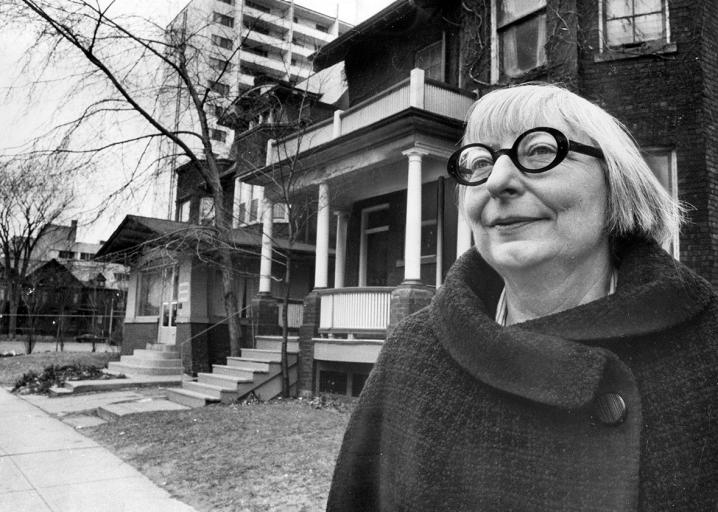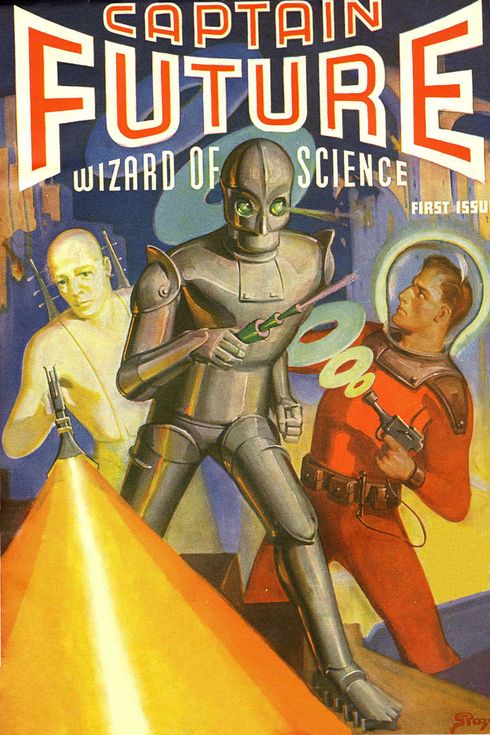Toronto has been subject to a higher level of gun-crime this year, largely instigated by American organized crime moving in. Youth street gangs are being pumped, armed and financed systematically. There was one dramatic incident, where a teenage girl was killed by gang crossfire at a major downtown intersection, which particularly upset people. Read more »
Category Archives: AP - Blog 2006 - Page 4
Wednesday, July 12, 2006 — Beware of Guardian Angels
Monday, July 10, 2006 — Rabbits and Cats
Violent storms and tornadoes (25 of them were counted) are circling Toronto, adding spice to the hot weather. I sit here, working to pull out of a financial miasma, but the desire to travel gnaws at me. . To be back on the move, again, that would be so good. I even find myself playing Ian Tyson’s “Four Strong Winds”, the Canadian anthem of wanderlust.
Stampy the Rabbit is my most frequent companion. He’s a gorgeous slate-grey breed with fur as fine as a mink. He is nothing like the dull rabbits kept in cages. I let him have free run of the apartment, and he lives a life of adventure. He is perfectly housetrained, using either of two boxes of wood shavings. When I am reading on the couch, he will climb onto my chest and beg treats, and he goes into ecstasies when I massage him… but that’s an effect I can create on many creatures, large and small. When on the alert, he will stand on his haunches like a gopher, ears alert. There is a mouse somewhere in the apartment. It is too clever to be caught in any of the traps I’ve set. I think Stampy monitors his subsonic squeaks. They are building a 44-story condo next door to my building. Weird construction noises and vibrations shake the apartment in mid-afternoon. I wonder how Stampy interprets them?
For many years, I had a cat who would hitch-hike with me. I got lots of rides merely from the appeal of his poking his head out of my backpack. Think of the effect that a rabbit would have in the same role! But I don’t think he would take to it. Actually, I don’t think I could manage to get him into a bag without a violent struggle that would result in broken limbs and furniture. Stampy may be gentle when he sits on my chest, but he has the heart of six lions and the fierceness of a komodo dragon.
Saturday, July 1, 2006 — Thoughts on Multiculturalism on Canada Day
Back to the blog! The last month has been rough, with an overwhelming workload. But things are easing off.
Canada Day, today, and I rode my bike around downtown, aimlessly, to enjoy the perfect weather and look at the crowds everywhere, picnicking, listening to concerts in parks, and generally enjoying the national holiday. People seem to be happy. If they are supposed to be terrified by the discovery of a “terrorist cell” a few weeks ago, they show no sign of it.
The “terrorist cell” business, was seized on by American politicians as proof that Canada is a “hotbed of terrorism” because of its “liberal immigration laws” (!). But it was taken with remarkable calmness by the Canadian public. Most people could see at a glance that there had never been any significant danger. The “cell” consisted of a handful of extremely stupid suburban teenagers who would have had difficulty organizing a surprise birthday party, let alone “beheading the prime minister” or blowing up skyscrapers in the financial district.
But one of the annoying side-effects was the incredibly stupid kind of “journalism” that followed. Was “multi-culturalism” to blame? Did it bring Canadian policies of “multi-culturalism” into question? What nonsense. Read more »
Wednesday, May 17, 2006 — I Tremble For My Country
I tremble for my country whenever I see the bland, pasty face of our new Prime Minister, Stephen Harper, on television. It’s not that Harper is dumb. He is actually quite clever, and stands out dramatically in a party that is notoriously filled with ignoramuses and barely literate yahoos. It’s not that Harper is incompetent. He has shown remarkable political acumen, and he ran his election campaign brilliantly. It’s not that he is dishonest, or corrupt. I’ve seen no evidence of either. The problem is not that he is “socially conservative” or promoting a religious agenda. He shows no evidence of being any more socially conservative in his personal views than the average Canadian. Besides, there is not much market for the social conservative agenda in Canada, where people remain, on the whole, individualistic and fond of personal liberty. Canadians find religious zealotry distasteful. Read more »
Monday, May 15, 2006 — French Canadian Swearing
The Catholic Church in Quebec has surprised everyone with a peculiar publicity campaign. They have purchased space on billboards, bus-stops, and other advertising places, in order to display swear-words. This requires some explanation. French Canadian swearing is the lamest on Earth. Don’t expect anything like the baroque splendour of Mexican swearing, or the earthy imagery in Russian curses, or even the repetitive sexual obsessions we are familiar with in English. The basic French Canadian swear words are distorted forms of the words for the articles used in a mass: “tabernacle”, “chalice”, “host”, “sacristy”.
However, this cannot be explained by any religious sensitivity. French Canada, especially in Quebec, is one of the most secular societies on the planet. Church attendance is very low in Canada, but by far the lowest in Quebec. The overwhelming majority of French Canadians have little or no interest in organized religion, though many will say they have some private, personal faith, uninfluenced by any church. Most people have no idea whatsoever what any of these “swear words” mean. If you catch your finger in car door, you say “tabernac’ ”, or “tabernache”. It doesn’t call up any image. It’s just a meaningless word. The average person, if asked to explain its origin, probably wouldn’t be able to tell you. By contrast, nobody who swears in English is unaware of the meanings of the swear words. Read more »
Tuesday, May 2, 2006 — Death of Jane Jacobs
 Jane Jacobs died last week. I did not always agree with her ideas, but I always had tremendous respect for her intellect and integrity. She was among the century’s most brilliant and original thinkers, and her presence alone made my city of Toronto an important intellectual center.
Jane Jacobs died last week. I did not always agree with her ideas, but I always had tremendous respect for her intellect and integrity. She was among the century’s most brilliant and original thinkers, and her presence alone made my city of Toronto an important intellectual center.
She was born in 1916, in Scranton Pennsylvania. Her first, and best-known book, The Death and Life of Great American Cities, was published while she still lived in New York City. It revolutionized thinking about urban planning and the nature of city neighbourhoods. But her subsequent books are equally important. They logically moved from the small scale questions she began to ask, such as “why is one street popular and safe, and another shunned and dangerous?”, through progressively larger issues of macro-economics, and finally to unexplored areas of ethics. She moved to Toronto, with her architect husband, in 1969, largely because of her opposition to the Vietnam War. Once in Toronto, she quickly became a public figure, spearheading opposition to urban policies that had already crippled many American cities. Thanks to her influence, Toronto avoided many of these disasters. Like any truly good thinker, she managed to be arrested at least twice, but she was never an enthusiast for the poses and pretenses of the professional “activist”. What she was good at was looking at the real world without the filter of ideological orthodoxy, and then writing down her common-sense conclusions with in a clear, simple style, more akin to the work of Montaigne than to the obscurantist fashions of her time. So it didn’t surprise me when I learned that, as a lonely child, she amused herself by carrying on imaginary conversations with Thomas Jefferson, Benjamin Franklin, and an Anglo-Saxon chieftain named Cerdric.
I first read her work when I was a teenager. One sentence of hers had a profound impact: “There is a quality even meaner than outright ugliness or disorder, and this meaner quality is the dishonest mask of pretended order, achieved by ignoring or suppressing the real order that is struggling to exist and to be served.” Remembering this sentenced saved me many times from being taken in by the waves of fake “rationalism”, pseudo-science, and mysticism masquerading as reason, that characterized the century I grew up in. John Sewell, the mayor of Toronto who actually took her ideas seriously, did not waste time explaining her writings, or their meaning. Instead, he spoke of her as a charming dinner companion, addicted to sweets (especially butter tarts), and relentlessly curious and questioning. Sewell was eventually ousted by an alliance of developers, corrupt police, and sleazy politicians, but in his term in office, Toronto blossomed, while other North American cities sank into decay and chaos. Many credit this positive era to her influence. The sad thing is that Jane’s struggle will go on in a new form. In all likelihood, her ideas will be oversimplified and grotesquely distorted, and used by some future generation to do harm. That is the most horrible thing about being an original thinker.
Sunday, April 23, 2006 — The Cosmopolitan Dream
My friend, the artist Taral Wayne, recently showed me some ancient Indian coins and asked me what I could tell him about the city-state for which they were minted. He thought I might be interested because he was sure they were from one of the ancient republics. He thought it might be named “Yaudheva”, which was what was scrawled by the coin dealer on its mounting card. There was also another word describing the figure au verso, but neither Taral nor I could make it out clearly.
This was all a bit misleading. Yaudheva would mean something like ” — ? — which is godlike”, an unlikely name for a city. But after looking through my old notes on ancient Indian republics, it dawned on me that it must just be a mix-up between “v” and “y” by the dealer.
Once I knew that it was actually Yaudhiya, then it was simple to untangle. That is the name of one of the republican confederacies of north-western India. I have extensive notes on the Yaudhiya republics. They are not as well-known as the Audumbara republics, but they are reasonably well-recorded from the 5th Century BC onwards. They are mentioned in lots of ancient literature, including the Mahabharata, the Puranas and in Panini’s treatise on grammar. They acquired fame, and a reputation for valour, by defeating Alexander, halting his progress into India. The coin is probably from the Yaudhiyan republic of Rohtika (or Rohitaka), some ruins of which survive in the minor provincial city of Rohtak in the State of Haryana.
The Yaudhiyan confederacy was a collection of city states sharing the same tribal ancestry, much like the early Latin cities. The Yaudhiyan tribes spread across what it now the Punjab. They developed republican forms of government quite early, and maintained them quite late, despite temporary submissions to the Kushan kings. When they threw off the Kushans, they proudly re-established their republican constitutions. But they continued to mint coins following the Kushan model, and corresponding roughly to the Greek drachma, on which the Kushan coin was based. Read more »


